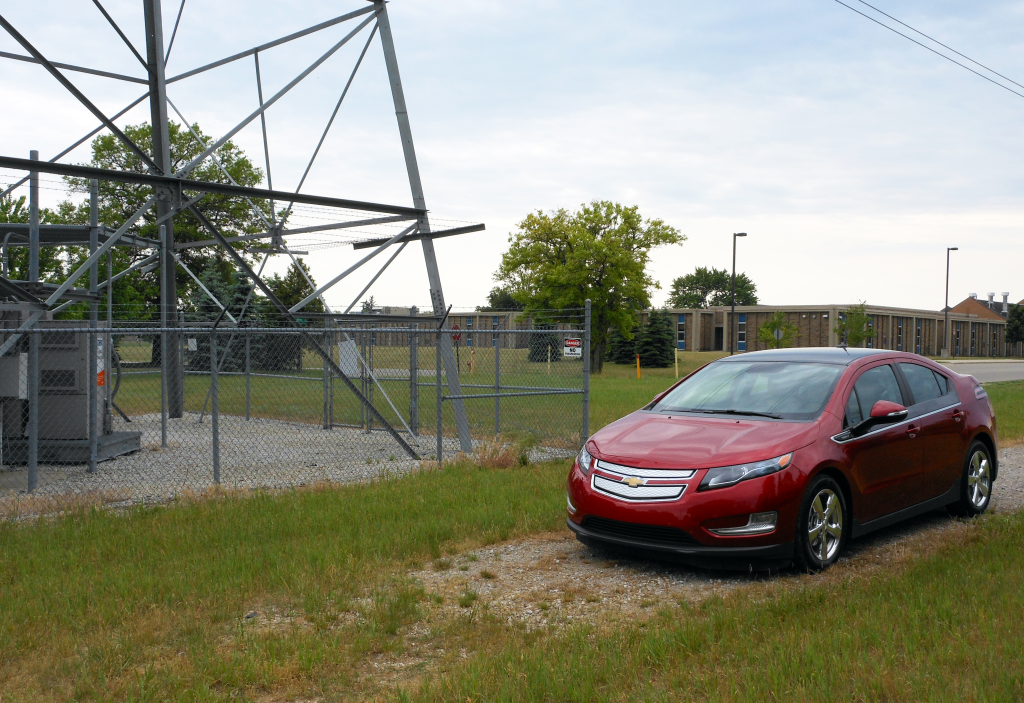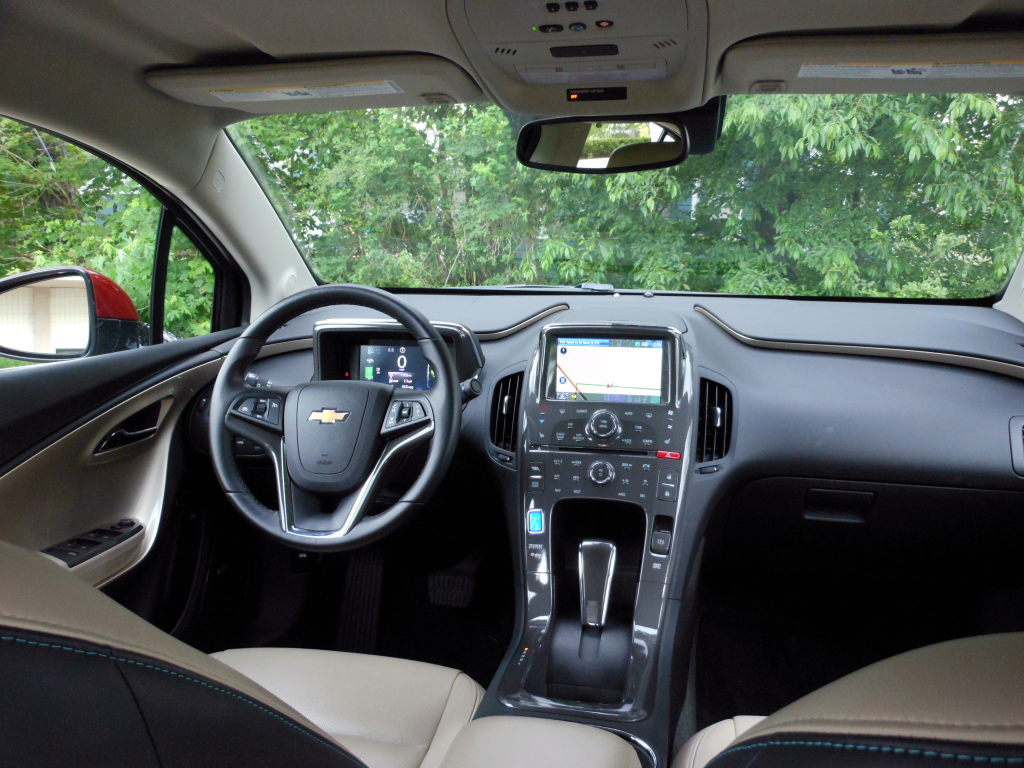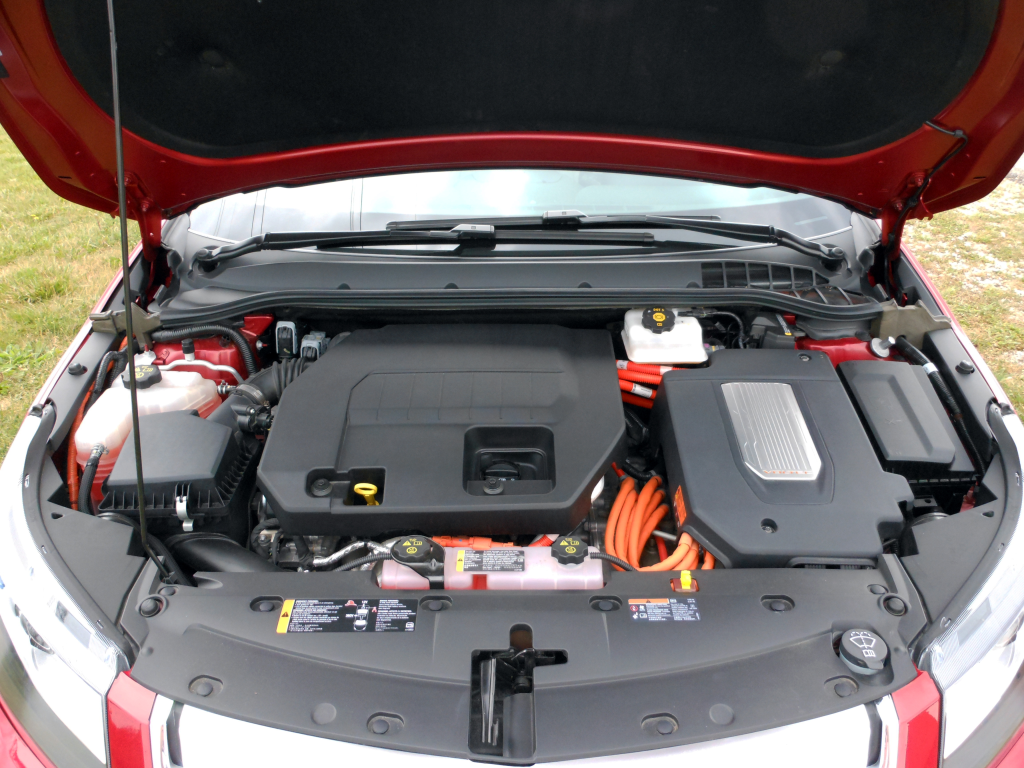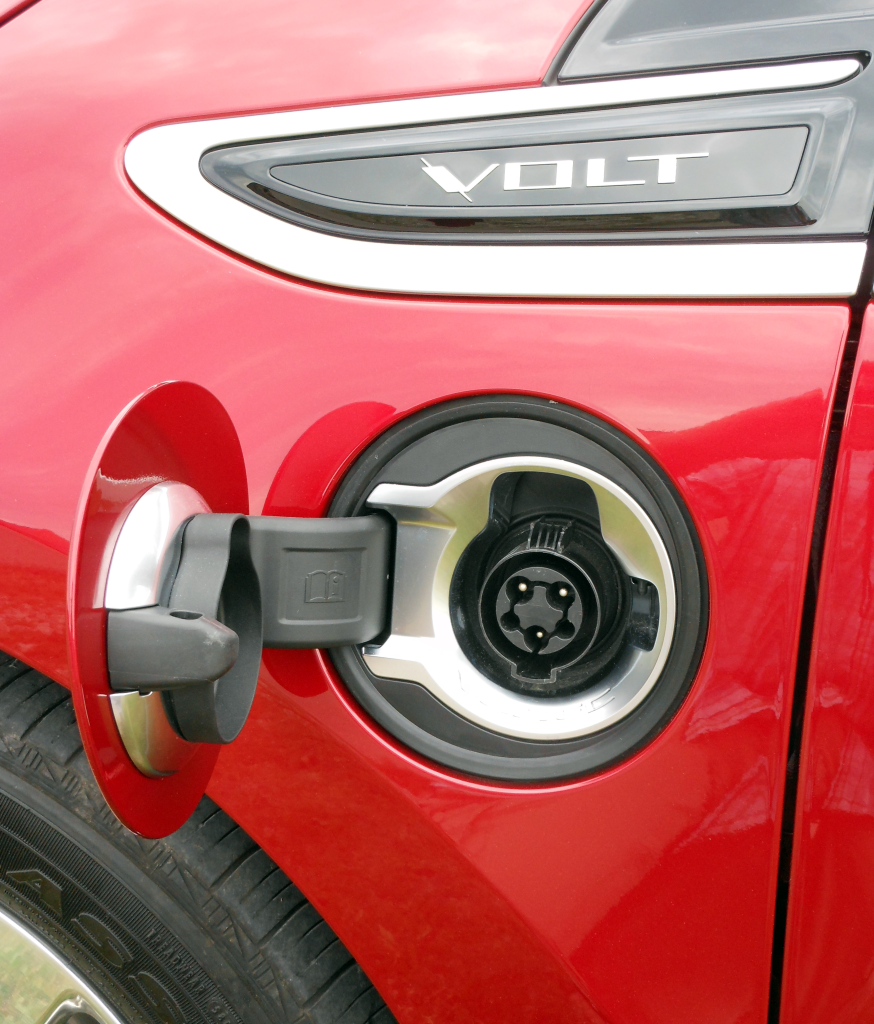William Maley
Staff Writer - CheersandGears.com
July 3, 2012
2011 was a tumultuous year for the Chevrolet Volt: sales didn't meet the high expectations set by General Motors, dealers had problems trying to get them off their lot, and then there was the battery fires which prompted a recall and a congressional hearing.
2012 so far is turning out to be a much better year for the Volt. Currently, the Volt is outselling Chevrolet's other halo car, the Corvette. (7,057 Volts vs. 5,547 Corvettes) and is on track to hit 20,000 units before the end of the year.

It seemed like a perfect time to revisit the Volt and wonder if it could reach the 20,000 mark.
Has anything changed since the last time the Volt visited the C&G Garage?
The big news for the 2012 Volt was a price drop to $39,995 (includes a $850 destination charge). To accomplish that, Chevrolet removed some of the standard features for the 2011 model and made them options. If you want your 2012 Volt to be like the 2011 model, you will have to pony up some more money. Also, the 2012 Volt comes with option of Chevrolet's MyLink Infotainment which adds the ability of playing Pandora and Stitcher internet radio. Other than that, the Volt is pretty much the same.
Next: The Exterior & Interior
So, the exterior is the same?
Since its last visit to the Cheers and Gears garage in February 2011, the Volt's exterior hasn't changed much. The front end features a fascia that is integrated well into the hood and front fenders to help improve aerodynamics. Also, the front end features a closed shield grill and projector headlights that extend into the front fenders. The side profile shows off the Volt's aerodynamic shape very well and features a chrome strip running underneath the windows. The Volt's back end is tall and has a squared off shape that is hidden by a spoiler.
And the Interior?
Also unchanged. Stepping into the Volt for the first time feels like you have entered the future. The Volt's instrument cluster says farewell to analog gauges and uses a large LCD screen to display all of the necessary information clearly. The center stack is mostly comprised of capacitive-touch controls that are simple to use, except in direct sunlight where its difficult to figure out which button does what. Sitting on top of the stack is a LCD touchscreen that handles climate, audio, economy information, and the optional navigation system.

One thing that could upset buyers about the Volt are some of the materials used for the dash. The center stack and certain parts of the interior use hard plastics. Even though the plastics are nicely grained and help cut down on weight, some buyers would expect better quality materials for the price.
As for interior space, the Volt has enough headroom for both front and rear seat passengers. Legroom does come at premium, especially for the back seat passengers due to the placement of the battery.
Next: Powertrain, Fuel Economy, Charging, and Verdict.
What about the powertrain? How does it drive?
The Volt comes equipped with an electric motor delivering 111 kW (149 HP) and 368 lb-ft of torque. The electric power comes from a large 5.5 ft., 435 lb., t-shaped 16-kWh lithium-ion battery pack that is mounted in the middle of the vehicle. The final piece of the Volt's powertrain is a 84 HP 1.4L engine acting as a generator once you deplete the battery, giving you an extra 300 miles.

Driving the Volt is like driving any other vehicle, albeit with barely any engine noise. Acceleration is very surprising due to low end torque of the electric motor. Getting up to speed on freeway onramps or leaving a stoplight was no problem for the Volt.
The transition from the Volt running on electric power alone, to using the gas engine is very seamless. The only giveaways that the transition has happened are the battery gauge changing to a gas gauge in the gauge screen and the slight hum from the 1.4L engine.
The Volt's handling is very planted, likely due to the placement of the 435 lb. battery. But it's also tuned for comfort, floating along the rough surfaces that dot the Detroit area. If you're expecting a quiet ride, you'll get it under 50 MPH. Over 50 MPH and you'll be able to make out road noise, especially in the back.
Steering also follows the comfort route, feeling light and somewhat "numb".
Fuel Economy?
The EPA rates the Volt at 95 City/93 Highway/94 Combined on EV power and 35 City/40 Highway/37 Combined when the gasoline engine kicks on. My average for the time I had the Volt was around 50 MPG. I'm betting the average would be higher if I had not taken a 100 Mile round-trip on the freeway and the battery only having a 20 Mile charge. Once the battery was depleted and the gas engine kicked in, the averaged dropped from 50 MPG to the low to mid 40's.
If you want the max fuel economy out of your Volt, stay within the 40 Mile EV range.
How long did it take to charge the battery?
Chevrolet says to charge a depleted Volt battery takes about four hours with the 240V charger or ten to twelve hours when using the 120V charger. I matched the ten to twelve hours charge time for a depleted battery. As for when the battery is about halfway used, charging time is about five to six hours.

And the verdict?
The Volt appears to have survived its first year with some minor bumps and bruises. The press about the fires and poor sales seem to be going away. In its place are the positives of the Volt; the quietness of the powertrain, extended range provided by the gas engine, and driving like a normal car. Some will balk at the high price and not getting that many luxuries. But with the Volt, you're buying it for the technologies. If you want luxuries, there's the Cadillac ELR coming in 2014.
The Chevrolet Volt solves one of the biggest problems plaguing electric vehicles; range anxiety. And people are beginning to take notice. Can it reach 20,000 sales? The answer looks to be yes.
Before I end this review, I need to make a note about electric vehicles in general. At this present time, electric vehicles aren't quite ready for primetime, but they're getting close. The problems are still price and battery capacity. The Volt might be the best comprise for an electric car, but it still falls into the price problem as other EVs. Electric vehicles are for small audience, despite almost everyone wanting one.
If you really have your heart set on an electric vehicle, be prepared to ask some difficult questions and doing some homework on your driving habits. Because that could make difference owning an electric or making an expensive mistake.
Disclaimer: General Motors provided the vehicle, insurance, and one tank of gas.
Year - 2012
Make - Chevrolet
Model - Volt
Trim - N/A
Engine - 1.4L Four-Cylinder, Voltec Electric Drive System
Driveline - Front Wheel Drive, Automatic
Horsepower @ RPM - 149 HP
Torque @ RPM - 368 @ 0 RPM
Fuel Economy: City/Highway/Combined - 95 City/93 Highway/94 Combined (EV Power), 35 City/40 Highway/37 Combined (Range Extender)
Curb Weight - 3781 lbs
Location of Manufacture - Detroit, Michigan
Base Price - $39,145.00
As Tested Price - $44,970.00 (Includes $850.00 Destination Charge)
William Maley is a staff writer for Cheers & Gears. He can be reached at [email protected] or you can follow him on twitter at @realmudmonster.





-3707742431.jpg.06edf8e14f4ccf35c60d4774a543cc11.jpg)



Recommended Comments
Join the conversation
You can post now and register later. If you have an account, sign in now to post with your account.
Note: Your post will require moderator approval before it will be visible.